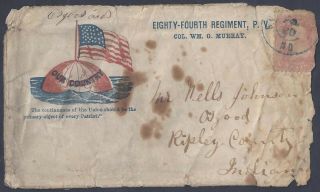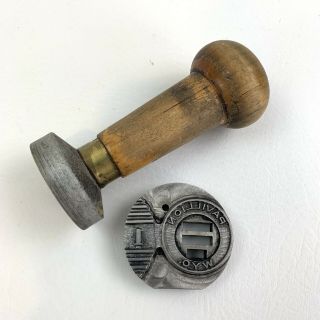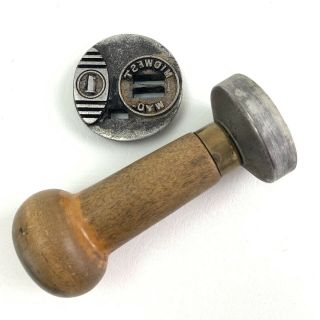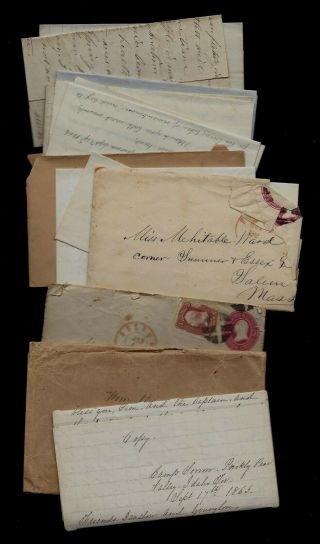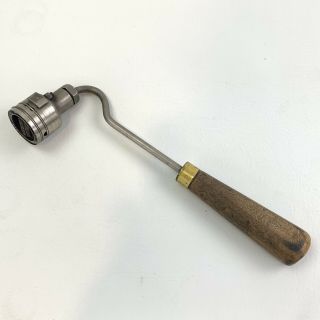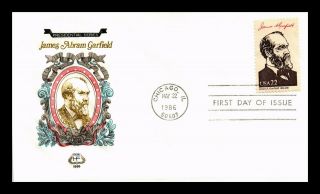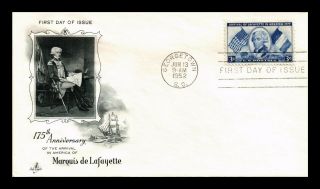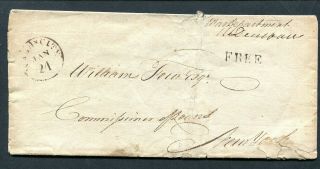1860s CIVIL WAR PATRIOTIC RED BORDER WORCESTER MA BOSTON WALDO FLINT STAMP
Item History & Price
| Reference Number: Avaluer:23172740 | Certification: NA |
| Grade: Ungraded | Quality: Used |
| Place of Origin: United States |
In her cookbook Mrs. Flint comes across as a lovely person: even-tempered, self-effacing, warm, and reflexively kind. She repeatedly praises her three servants, her caterer, and even her caterer’s assistant by name, celebrates the confectioners who supplied her cakes (except for one that came under new management, whose cakes she describes as “miserable”), and revels in the intimate suppers she took with her friend Mrs. Gilchrist in the kitchen while her husband presided over his “library suppers.” Mrs. Flint’s deep affection for her husband is touching. About Mr. Flint’s 1863 library supper she writes, “The supper was said to be very nice & the guests said they enjoyed it. I thought so from the sound of their voices – Mr. Flint seemed well pleased, which pleased me.” Mrs. Flint certainly did not mean to write an autobiographical cookbook. She revealed her personal story purely inadvertently, in the course of compiling notes on her various entertainments, which sprawl across over thirty pages of her cookbook. 1 Mrs. Flint kept these notes to record how she had managed these affairs and how she had judged their outcome, so that she would know what to do, and not to do, the next time she hazarded a similar event. In order to ensure that these notes were useful, she took pains to make them as detailed and specific as possible, which is why, inevitably, she ended up writing so much about herself. This specificity and detail make Mrs. Flint’s notes enormously helpful in understanding antebellum meals and entertainments, which anyone interested in culinary history strives to do. The frustration of historical recipes is that they tell us only how the dishes of the day were prepared. If we want to know how people of the past, or at least a certain group of them, actually cooked and ate, we have to see these dishes in the context of their period serving occasions.This post focuses on Mrs. Flint’s supper parties and sit-down suppers, which were her most frequent company entertainments and which, being “suppers, ” albeit of different sorts, revolved around some of the same foods and observed some of the same conventions. 2 Mrs. Flint’s Supper PartiesThe grandest supper party was the ball supper of the elite, which seems to have been the prototype of all antebellum American supper parties on whatever scale. Ball suppers were served very late, after the dancing was over, in a specially designated room whose doors were said to be dramatically “thrown open” at the appointed hour, to reveal a long white-cloth-covered table splendidly decorated with candles, flowers, and sugar sculptures and spread with a lavish buffet. In a cookbook of 1847, Eliza Leslie outlines a menu suitable for a ball supper. The bill of fare comprises an astonishing fifty-eight items: an abundance of cold dishes, as was typical for suppers (boned turkey in aspic, a ham, partridge pie, tongue, beef a la mode, chicken salad, potted lobster, pickled lobster, pickled oysters); a few hot dishes (creamed oysters in patty shells, fried oysters, turtle); twenty-two cold desserts (charlottes, blancmanges, custards, creams, jellies); ten ice creams and ices; six varieties of preserved fruit; and three very large cakes. 3 People worked their way through this feast with multiple changes of plates and silver, which waiters fetched for them from a separate table or sideboard. While there might be some chairs set against the walls of the supper room in which people could sit, most people at such affairs ate standing.Most antebellum American hostesses staged more modest supper parties along the lines of cookbook author Catharine Beecher’s plan of 1846, which Beecher describes as “a plain but genteel arrangement for company in . . . any of our larger cities.” 4 Beecher makes no mention of dancing, which was not always part of ordinary supper parties, and she states firmly that such parties should wrap up at a reasonable hour and should not entail outrageous amounts of food. Still, her plan basically follows that of the ball supper: a buffet set out on a table in an attractive manner and eaten standing. Beecher covers “a long table in the dining-room . . . with a handsome damask cloth, ” sets a high flower arrangement or other “ornamental article” in the center, and places “champagne glasses with flowers at each corner.” If the party is small, Beecher thinks it sufficient to arrange “loaves of cake at regular distances” down the middle of the table and surround the cakes with preserved fruits, cold desserts, and lemonade. However, “if a very large company” is to be served and “a larger treat . . . required, ” she writes, the large table should be supplemented by two smaller tables, one “furnished with sandwiches, oysters, salad, celery, and wine, and the other with coffee, chocolate, and lemonade.” Those fortunate enough to possess a very large table can arrange everything on it, she adds, with the sweet things in the center, the savory foods and wine at one end, and the lemonade and coffee at the other.While Beecher goes into greater detail on the subject of supper parties than any other antebellum cookbook author, she leaves unsaid many things that we would like to know, because these things were common knowledge to her readers. Happily, Mrs. Flint tells us more than we would even think to ask in her notes on five “stand up suppers, ” as she calls these entertainments 5: a party for eighty persons (fifty-four attended) staged in 1859; an 1863 all-gentlemen’s party for twenty-five members of “the parish committee”; and three Christmas parties, in 1862, 1863, and 1864, each for fifteen to twenty guests. We almost feel as though we were there!All of Mrs. Flint’s supper parties were rolled out similarly. Mrs. Flint’s cook prepared all of the savory foods for the party except the tricky dressing for the chicken or lobster salad, which was either made by Henry Smith, Mrs. Flint’s caterer and party planner, or else bought from a purveyor. Mrs. Flint always ordered all of the breads, cakes, and frozen desserts to be served from outside purveyors. The cakes and breads were delivered to the house in the morning or early afternoon of the party, the frozen desserts at about eight in the evening. Henry Smith and his assistant arrived at three in the afternoon and immediately began to move furniture. Mrs. Flint generally had the dining room table moved into the library, to serve as the supper table, and had the piano drawn to the center of the dining room, to hold the “silver tea set and china for tea & coffee.” However, for her small Christmas party of 1863 Mrs. Flint chose instead to set out the supper on the piano, in the back parlor (which seems to have been its usual place). For this event, Henry positioned her tea table in front of the piano, presumably as a staging area for tea and coffee, and placed a “small table” before the fireplace in some unspecified room, perhaps to hold plates, glasses, and silver, which likely could not have fit on the piano with the food. All this furniture rearranging seems strange to us, but people of the day happily staged company meals and entertainments in whatever space struck them as suitable for particular occasions.Guests arrived between 8 and 8:30 in the evening and were “received” at the door by Henry Smith, or by Henry’s assistant, or, on one occasion, by Henry and Mrs. Flint’s “new boy Frank, ” who she remarks “did very well & improved by seeing Henry.” Typically, guests removed their coats in a room on the ground floor (I think the foyer), but at the very large party of 1859 guests were conducted upstairs, where Mrs. Flint’s houseboy, standing in front of her closed bedroom door, directed “the ladies & gents” to separate rooms where they removed their outer garments and freshened up. The ladies were “assisted” by Mrs. Flint’s maid, whose principal task was likely to help the ladies adjust their hair. In her behavior book, Eliza Leslie tells us that the complicated hairdos of the day, full of “false curls, ” were prone to a sudden, mortifying collapse if so much as a pin had slipped out of place. 6
“As soon as friends arrived” at Mrs. Flint’s 1864 Christmas party—and at her other supper parties too, as her notes tell us—they were offered coffee, tea, and a choice of cakes, specifically “squares of frosted pound cake” 7and what Mrs. Flint called “light mixed cake, ” by which she meant some combination of almond macaroons, coconut cakes (coconut macaroons), sponge drops (individual dropped sponge cakes), and hard meringues. (She varied the assortment slightly from party to party.) This little repast, which was essentially an abbreviated version of the usual evening meal of the time, often referred to as “tea, ” was old-fashioned in Miss Beecher’s view, and she was happy to dispense with it, as it entailed “labor and anxiety.” The “anxiety” was that the whole business was properly conducted by servants, which Beecher, rightly, was concerned that her readers might not have to spare. Beecher suggested that if this interlude simply had to be “resorted to” (perhaps in deference to tradition), the lady of house preside in a ceremonial fashion at the tea table, while the gentlemen “wait upon the ladies in the room, and then help themselves.” The Flints, of course, had plenty of help on hand, and so professionals did all. In her notes on her gentlemen’s supper party of 1863, Mrs. Flint remarks that Henry “would have liked to have Mary [Mrs. Flint’s maid] pour tea & coffee, which she might have done had I known it beforehand.” Presumably Mary was occupied on this occasion, and so Henry had to assume the duty. At the Christmas supper party of the same year, Henry’s assistant and Mrs. Flint’s houseboy “poured and passed coffee and tea.”Supper was served between 9 and 9:30. Like Catharine Beecher, Mrs. Flint chose salad, oysters, and sandwiches as her savory supper items—but Mrs. Flint, unlike Miss Beecher, also tells us how she prepared these foods. Party salads in the day were meaty affairs. The favorite was chicken salad, which Mrs. Flint served at all of her supper parties except the very large one of 1859, where, for convenience’ sake, she had turkey salad instead and offered lobster salad in addition. No matter what their main ingredient, party salads were similar. They were composed of roughly two-thirds meat and one-third vegetable—chopped celery in the case of chicken or turkey salad, torn head lettuce in the case of lobster salad—and were dressed with a mustardy mayonnaise made with hard-cooked egg yolks. This dressing seems to have been the earliest iteration of mayonnaise in American home kitchens, and it is clear from period recipes that neither cookbook authors nor home cooks had a clue how to mix the eggs and oil into a smooth emulsion. Mrs. Flint wrote down Henry Smith’s assistant’s excellent recipe for the dressing in her notebook (see Adapted Recipes), but her cook seems to have been met with failure in making it and seems never to have been asked to attempt it again.
Mrs. Flint ordered “solid” (that is, shucked) oysters in the substantial quantity of one half pint (or slightly more) per person for all of her supper parties. At three of her parties, all of the oysters ordered were scalloped—that is, arranged in three or four layers in a dish, with buttered bread crumbs in between and on top, and baked. But at two of her parties, some of the oysters she ordered were served cold rather than scalloped, including at her gentlemen’s supper party, about which she notes “two gallons solid oysters—two quarts of them to be cold.” Our first thought is that the cold oysters came to the table raw, but this may not have been the case because then, as now, raw oysters were customarily served freshly opened and on the half-shell. I suspect that the cold oysters may have been pickled 8, for under the heading “Necessary to be thought of at Mr. Flint’s Suppers – Copied from Book of 1853” 9 Mrs. Flint lists cayenne pepper, mace, and nutmeg, all of which were required for pickled oysters—and for no other dish in Mrs. Flint’s supper-party rotation. Pickled oysters turn up frequently in accounts of antebellum American parties, including one penned in acid by Frances Trollope, an unsparing British observer of antebellum America’s “domestic manners.” “Their large evening parties are supremely dull, ” Trollope wrote in 1832. “To eat inconceivable quantities of cake, ice, and pickled oysters—and to show half their revenue in silks and satins, seem to be the chief object they have in these parties.” 10Unlike Miss Beecher, Mrs. Flint did not serve ready-made sandwiches at her standing suppers. 11 However, she did order “bread rolls” for all of her parties, and I believe that she expected many of her guests to cut the rolls in half and stuff them with the salads, which would be a convenient way to consume the salads when eating standing. And I suspect that the “oyster rolls” that Mrs. Flint ordered for two of her supper parties were meant to serve a similar purpose. Oyster rolls were generally used to prepare the dish then known, indeed, as “oyster rolls” (or sometimes “oyster loaves”), which consisted of hollowed-out rolls stuffed with creamed oysters. Cookbook author Maria Rundell, writing in 1807, tells us that hollowed-out rolls were “sold for the purpose” of making this dish. 12 However, since Mrs. Flint never mentions any oysters being creamed, I surmise that she set out the rolls as receptacles for the scalloped oysters, just as, I think, she set out the bread rolls for sandwiches, all in an effort to make things easier for her standing guests.Beecher deployed large, fine cakes as the focal point of her supper table, as many antebellum American hostesses did. But Mrs. Flint instead decorated her table with an array of fancy molded frozen desserts. She was particularly drawn to frozen desserts associated with the new vogue for French cooking, such as frozen pudding (suggestive of rum-raisin ice cream), Roman punch (a citrusy, boozy tea sorbet), vanilla ice cream (which was considered fashionably French even though it had long been on the scene), and bombe glacée (typically vanilla ice cream encased in berry sherbet). In addition, she found room in her dessert display for three long-traditional iced favorites, pistachio, lemon, and pineapple ice creams. Mrs. Flint personally extricated these desserts from their molds onto serving plates, evidently not even trusting her cook to do the deed. So long as they made a splendid visual impact, she seems hardly to have cared if these desserts were eaten. “A good deal of ice left, but I think about the right quantity provided, ” she notes about her Christmas party of 1863. Unfortunately, visual splendor was not always achieved. About her 1859 supper party for eighty she notes, “I should have liked four dishes instead of two of the Bombe Glace & Frozen Pudding, one quart in each – they were too large to look well.”
A dessert consisting of six rather incompatible flavors of ice cream and sherbet—and nothing else—would seem strange and unappealing to us today, but in Mrs. Flint’s day the difficulties of freezing endowed frozen desserts with a cachet that carried the day for such a notion. Frozen desserts were a passion in antebellum America—and a nightmare for most antebellum hostesses. Most women could not buy frozen desserts because they lived inconveniently far from confectioners and could not afford their wares anyway. So they made the desserts at home—assuming that they could find the ice, which in warm weather or warm places could be problematic. Women who did have ice (or freezing weather) and lots of help could theoretically prepare several frozen desserts successively using the same apparatus—Miss Beecher suggests a “tin pail” if no better device is at hand 13—and keep them all frozen, possibly even in fancy molds, until serving time. But for most women, the only convenient way to keep frozen desserts frozen until serving was to leave them in the freezing apparatus, which meant that they could offer only one paltry variety, in freeform, at a party. Mrs. Flint’s gorgeous display could be mustered only by a wealthy (and generous) hostess living in a sophisticated big city like Boston, blessed with fine confectioners aplenty—and even for Mrs. Flint freezing presented complications. She had to order the desserts to arrive at her home just before her parties began, for the obvious reason that she could not keep them frozen for long, no matter how carefully and thoroughly they came packed in ice.At the all-gentlemen’s supper of 1863, guests found the chicken salad, in an unspecified number of “round dishes, ” and the frozen desserts on the long sides of the supper table and the scalloped oysters, in four dishes, at the opposite ends. This was a supper party at which cold oysters were served, but Mrs. Flint says nothing about where they were placed, nor does she mention the bread rolls or oyster rolls. “Silver arranged very prettily, ” she writes. Perhaps the silver was laid out on the supper table in a pretty but not entirely convenient manner, for she adds that she “would have liked my small table placed in front of the piano with some of the silver and viands upon it.” Mrs. Flint does not mention where Henry set out the dinner plates, wine glasses, napkins, and the bottles of hock (German white wine), sherry, and champagne that she ordered for the party. Perhaps she managed these things the same way for every party so there was no need to remind herself about them.Mr. Flint’s Library SuppersEvery twelve to eighteen months, Mr. Flint presided over a sit-down supper for ten to twelve trustees and supporters of the Boston Public Library. Mrs. Flint did not attend “Mr. Flint’s library suppers, ” as she calls them, even though women were sometimes among the guests—and even though it was typical in the day for wives to cohost otherwise all-male dinners staged for their husbands’ business associates. Perhaps even with all of the help that Mrs. Flint had at her disposal, these suppers required her personal supervision in the kitchen as they occurred. The library suppers were complicated, lavish productions, as their cost attests. Mrs. Flint records that she spent, on average, forty dollars on these suppers, which amounts to roughly $1, 150 in contemporary dollars, or about $100 per person.The sit-down suppers featured many of the same foods as the stand-up supper parties and were marshalled in a similar manner. The Flints’ cook prepared most of the savory dishes (starting a day in advance to dispatch the foods that would be served cold), while outside purveyors provided the breads, cakes, and cold and frozen desserts. As at the stand-up suppers, Henry Smith and his assistant arrived at three o’clock in the afternoon and immediately set to work rearranging furniture. The library suppers were always served in the library, so the dining room table and chairs had to be moved there. At the 1860 library supper (which Mrs. Flint writes “may serve as a guide” for all) the dining room was commandeered as a staging area for the waiters, the “tea service & coffee cups” laid out on the piano (which evidently was moved from its usual spot in the back parlor) and the “card table placed south of the piano for plates, spoons, forks, or whatever might be wanted.” The library supper of January 1861 also entailed extensive rearranging of furniture in the front parlor. Mrs. Flint’s notes on the matter are vague and hard to decipher, but it seems that some sort of book display was mounted on a “round table” and that “Mr. Flint’s green desk” and a “small sofa” were moved from their usual place. The reorganizing of the parlor was presumably undertaken to facilitate the business meeting that preceded all of the library suppers. These meetings started between seven-thirty and eight, but many of the participants joined in much later (if at all), and Mrs. Flint recorded the precise arrival times of these laggards in her notebook (at the request of her annoyed husband, one supposes). 14 The guests went to the table between nine-thirty and ten and got up shortly before midnight. The hour seems extraordinarily late, but most guests likely walked home on Boston’s gas-lit streets, which afforded an interval for digestion.In writing out the menus for the library suppers, Mrs. Flint divides the main course (as we would call it) into two sections, which she heads “cold” and “hot.” She lists oysters under both headings in all of the supper menus, allocating one third of her oyster order for serving cold, the rest hot. My guess is that the cold oysters were pickled, though she does not say so. The hot oysters were scalloped and presented in two heaped dishes, one on each end of the table, except at the 1861 supper, where the hot oysters were creamed and served in puff pastry shells ordered from a bakery, making a popular period dish called “oyster patties.” Mrs. Flint ordered five or six quarts of oysters for every supper—or roughly one pint per person—but it is clear that she did not expect this staggering quantity to be consumed in its entirety, any more than she did the huge display of ices at her 1863 Christmas supper party. Her concern was that the oysters appear abundant on the table. About the 1863 library supper she writes, “The right quantity of oysters though nearly a quart left, of which Ellen [her cook] made a very nice pie.” 15As superabundant as the oysters were, they constituted only a small part of the prodigious main course offered at all of the library suppers. At three suppers, the cold foods comprised a whole ham and four chickens. Another supper featured the same cold dishes plus lobster salad, and another tempted guests with four cold chickens with “celery dressed” and four cold geese (a rather strange idea, at least to most people today). The cold foods were paired with an equally bountiful array of hot items. At most suppers, Mrs. Flint served three or four hot ducks plus four hot grouse or partridges, though at one supper she offered instead a turkey (with deep-fried mashed potato balls) and six roasted pigeons. I suspect that the turkey was boiled, and that the grouse and partridges served at the other suppers were boiled too. The many hot birds on these menus would not all have fit in a period stove oven, and boiling was then a common way to cook poultry, at least of certain types. 16 Mrs. Flint served “bread rolls” at all suppers, as well as cranberry and currant jellies to accompany the birds, and she mentions that the table was always set with castors (cruet sets) containing pungent catsups and store sauces. Still, the main courses do seem dull, not to mention rather too unremittingly focused on bird flesh. It is possible that the near absence of vegetables was a matter of period supper conventions; at dinners, multiple vegetable dishes were the rule.
I am puzzled both by the enormous quantity of food served in the main course of these suppers and by the repetitiveness of the cold and hot dishes. I wonder if perhaps the main course actually comprised two complete main courses for twelve, one cold and one hot, allowing each guest to choose either a mostly cold meal, as was typical for a stand-up supper, or a mostly hot one, as was typical for a dinner. But even if this was indeed the plan, the amount of food still seems excessive, for it seems unlikely that all twelve guests would hanker after the same temperature meal. Couldn’t Mrs. Flint have prepared each meal in a quantity to serve, say, eight people? I would certainly think so, but then my sensibilities are likely very different from Mrs. Flint’s. What I consider simply sensible she might have considered an all-too-obvious ploy for thrift, any suggestion of which in an entertainment insulted the guests and shamed the host. Mrs. Flint’s notes speak her goal as a hostess clearly. She meant to lay a splendid table, both beautiful and abundant, not in order to “impress” her guests, which she never shows a need to do, but to cosset and delight them.Seemingly patterned after the fancy new dinner service called à la russe, the final courses of the suppers were incredibly lavish. On February 2, 1860, Mr. Flint’s twelve guests were confronted with one quart of charlotte russe, one quart of frozen pudding, three pints of Roman punch, three pints of vanilla ice cream, and two one-quart molds of calves’ foot jelly 17–which they were invited to consume with eighteen squares of frosted pound cake, twelve coconut cakes, and twelve macaroons. After diners had gotten down as much of this dessert as they could manage, the waiters cleared everything from the table, probably including the cloth—and brought on olives, cheese and crackers, oranges, raisins, English walnuts, and shagbarks. Finally, there was coffee. (At the 1861 supper there would also be cigars with the coffee—“for the first time, ” Mrs. Flint writes in her notes.) Coffee was no doubt welcome after all that food, not to mention the hock, champagne, “brown Sherry, ” “pale Sherry, ” and Madeira that Mrs. Flint ordered for the 1860 supper (and all the others). She had “nearly 30 small tumblers [for] wine” on hand in 1860, suggesting that she expected guests to do some serious tippling.The library suppers seem strange to me in all kinds of ways, but because Mrs. Flint has shown me exactly how they happened, I know that they actually did happen—which is more than I can say about the meals and parties described in most antebellum cookbooks, behavior books, and novels, which are so general, or incomplete, or obviously filled with fantasy that I can’t help disbelieving that persons of that time, if returned to life, would recognize them. How typical Mrs. Flint’s suppers were of other suppers staged by persons of her time and place and social class I don’t know and may never know unless I find parallel accounts in other manuscript cookbooks. And perhaps I will. But I doubt I will find another manuscript writer as illuminating as Catharine Flint or as companionable.
00056



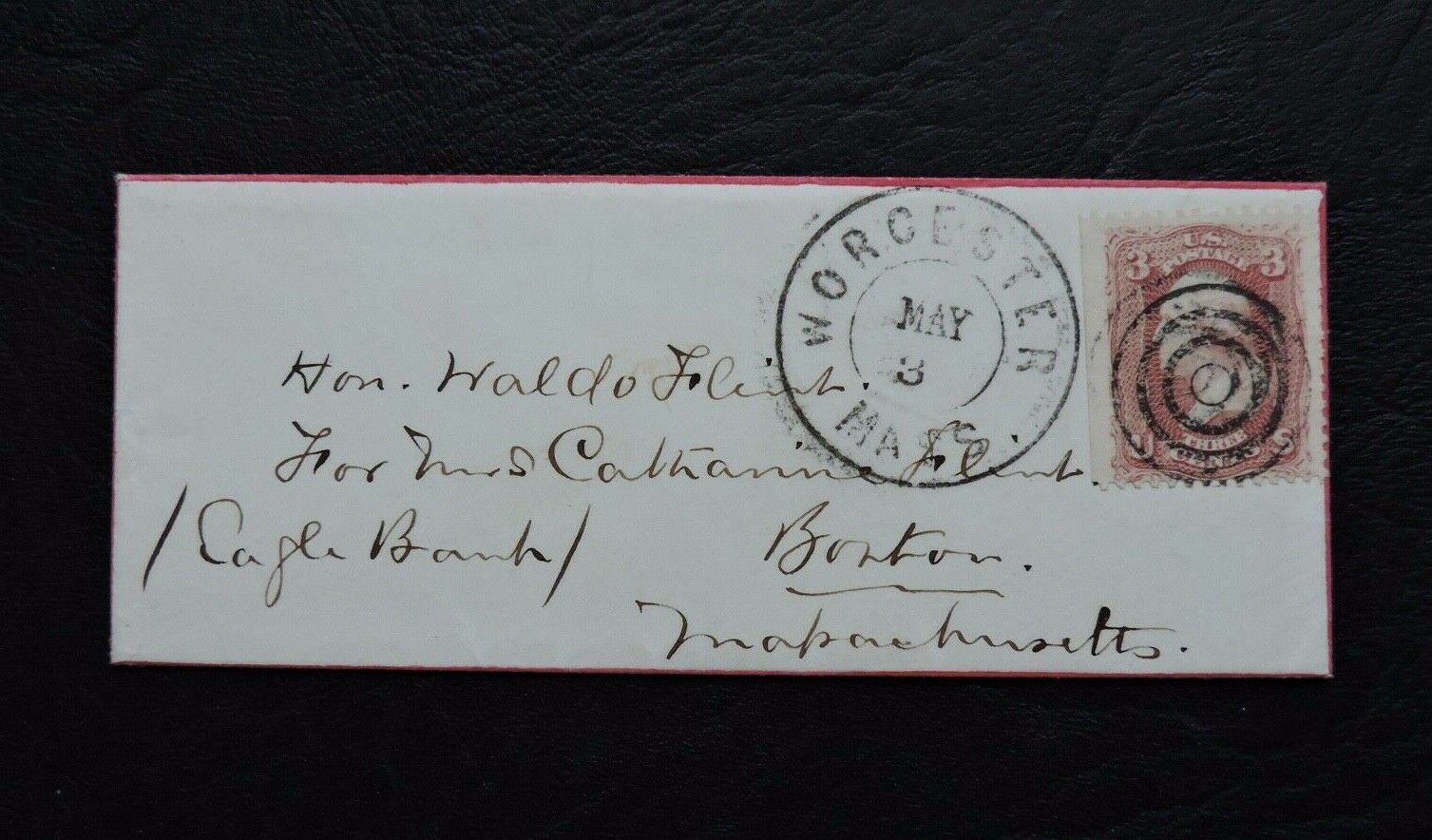
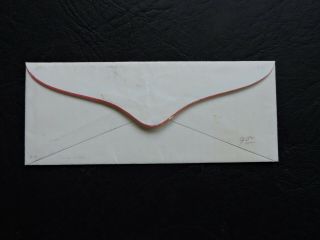
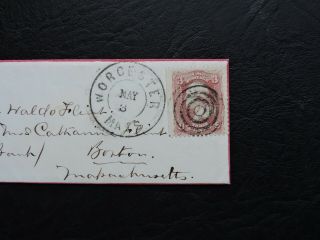
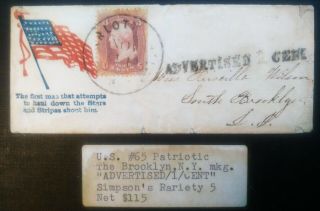
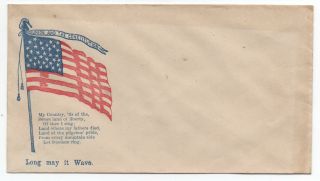
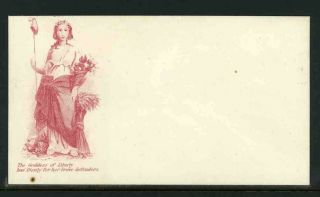
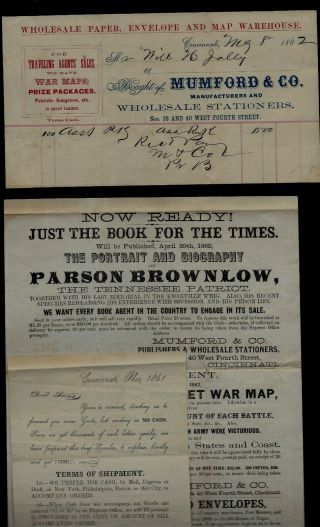
![1860s Civil War Patriotic Held For Postage Norwich Ct [rf. 65]](https://pic-g.avaluer.net/imgstmb/c/b/g/f/o/-1860s_civil_war_patriotic_held_for_postage_norwich_ct_rf___65-1_251_tmb.jpg)
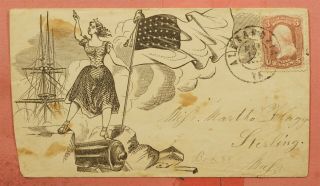
![1860s Civil War Patriotic Chicken Cartoon St. Johnsbury Vt [y4720]](https://pic-g.avaluer.net/imgstmb/c/b/h/l/g/-1860s_civil_war_patriotic_chicken_cartoon_st___johnsbury_vt_y4720-1_251_tmb.jpg)
